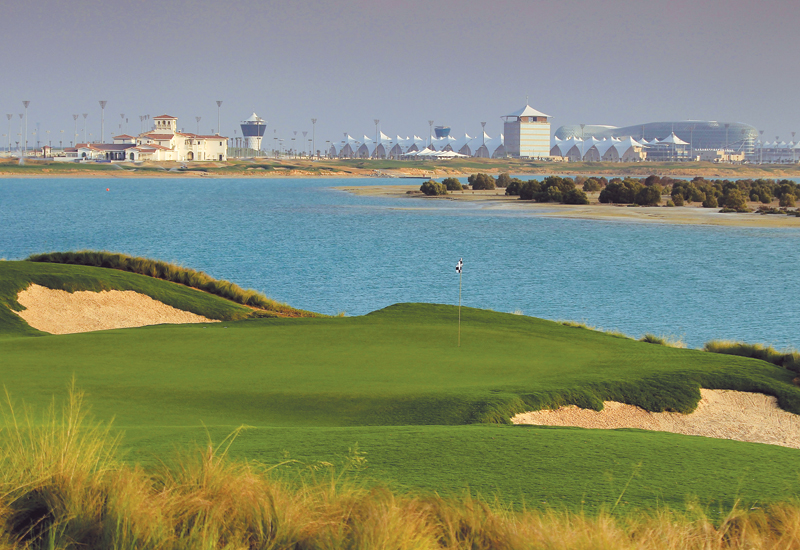Developments
The amount of new infrastructure being built in the destination is undoubtedly one of the most important factors in increasing the amount of visitors to Abu Dhabi — and, in particular, in increasing the length of visitors’ stays in the emirate.
In line with ADTA’s vision for the future, developments such as Al Reem Island, Yas Island, Saadiyat Island, the F1 circuit, and Ferrari World have made headlines and, says ADTA’s Al Reyami, have already attracted the all important leisure visitors — who are likely to spend longer in Abu Dhabi than their business counterparts — to the emirate.
“I think Abu Dhabi has taken the right approach to tourism, because they are expanding in all areas — cultural, heritage, hotels, and attractions,” agrees Al Forsan’s Taylor.

| Advertisement |
The development of Yas, Saadiyat, and Sir Bani Yas Island have demonstrated Abu Dhabi’s commitment to broadening the destination, says Hyatt director of worldwide sales South West Asia Thierry Bertin — who admits that he originally thought that Saadiyat Island would operate as a destination in itself, but concludes that it now plays an important role in tourism in Abu Dhabi.
“You can’t market Saadiyat Island alone like you would the Maldives for example, you have to market it as part of Abu Dhabi,” he explains.
“We are very optimistic with Abu Dhabi because we hear good things from a lot of people. All of the developments are bringing something new, it will complement Dubai — I don’t think it will really compete with Dubai but it is bringing the UAE another step forward,” he adds.
The importance of the big leisure developments such as Saadiyat and Yas Island should not be underestimated in driving longer-stay guests.
St. Regis Saadiyat general manager John Pelling says: “I think inevitably in a resort environment such as that, the length of stay is a little bit longer than what perhaps Abu Dhabi has traditionally enjoyed. So yes I think that’s one of the reasons for Saaidyat’s development I’m sure.”
It isn’t just the increase of leisure guests that will push up the length of stay in the emirate, says Yas Hotel’s Loughland, but the increase in activities for business guests.
“Through luxury hotels to eclectic spa experiences to Championship golf at Yas Links, the driving experiences of the Yas Marina Circuit and the fastest rollercoaster in the world at Ferrari World Abu Dhabi, we are seeing substantial growth in the leisure market and a definite tendency for corporate guests to stay an extra few days to enjoy these unique opportunities after their business trip or conference is over”.
The number of big name hotels to come to Abu Dhabi — The Westin Abu Dhabi, Hyatt Capital Gate, Jumeirah at Etihad Towers, to name but a few — are another important step for Abu Dhabi’s tourism market; there may be golf courses and theme parks aplenty, but if there is nowhere nice to stay, visitors won’t come back.
“The competition will be quite intense, but this is a good thing because these hotels will be raising the profile of the destination,” says Westin Abu Dhabi general manager Klaus Niefer.
“It is the future landscape of Abu Dhabi that makes the city so attractive to hoteliers,” he adds.
Sofitel is another company planning to open a hotel in Abu Dhabi during 2011, and Sami Nasser, Sofitel Middle East, Africa and Indian Ocean vice president insists that there is still a big draw for brands to come to Abu Dhabi, despite the amount of new supply on the market.
“Abu Dhabi still needs good hotels, and there is a big opportunity there, that is why so many people are coming in at the moment. For us, we will be based on the Corniche and it will be our first hotel in the city — we want to cater to that need for good hotels,” he explains.
It is not just developments in the leisure and entertainment sector which purport to be contributing to Abu Dhabi’s future success — the airport’s estimated US $6.8 million expansion programme will reportedly allow 20 million passengers a year to pass through its doors; setting the emirate up to be a hub for international, as well as domestic, travel.









 Search our database of more than 2,700 industry companies
Search our database of more than 2,700 industry companies









